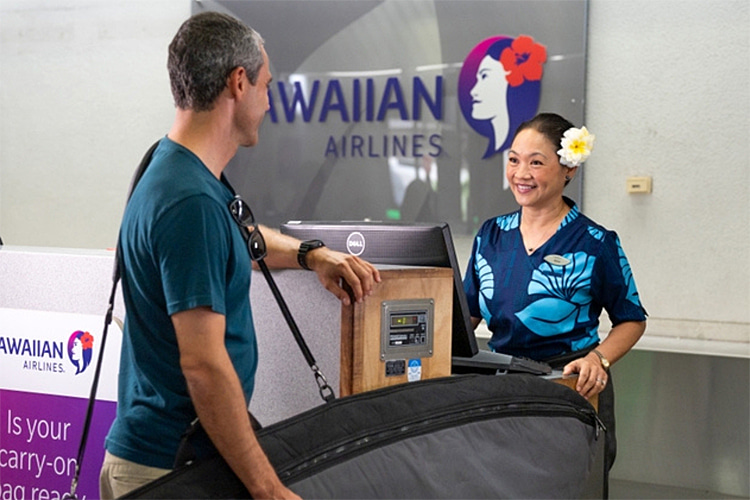
If you’re an airline manager or a corporate communications professional working at an air passenger carrier, then this article is for you.
Let us introduce ourselves. We are surfers. We travel often – by foot, car, bus, metro, train, and airplane.
And yes, we are aware that the airline industry is a tough business and one of the least profitable sectors in modern capitalism.
We also know that reputation is still one of your greatest assets and that it many times makes the difference when a consumer chooses this – and not that – airline.
That said, we agree that each airline has its own commercial priorities and preferred revenue streams.
We reckon it is OK to change strategy. It’s fine if you can’t please everyone. Fair enough.
The problem is that you go very quickly from selling and promoting yourselves as a surfboard-friendly air carrier to despising the large, fragile, and difficult-to-transport wave-riding object.
This isn’t new, though, and it makes it really hard to keep an up-to-date list of airlines that care about surfboards.

Inconsistent and Unpredictable Flight Policies
Airlines seem to take turns among the surfing community as the “best and greatest” and “the worst and most ruthless” board carrier.
You’ve even hired professional surfers to help sell your flights from and to popular surfing destinations.
The thing is, the hype and the good vibes never last long, and you seem to go from amazing to disastrous in a short period of time.
So, we fall for your good intentions until we’re utterly disappointed.
And we’re not even talking about the way you handle surfboards because that’s a topic in which we tend to have the worst memories and nightmares.
Let’s just talk about the highly friendly surfboard-carrying regulations you publish one day, and the real situations your customers-who-surf face while checking in their equipment the next day.
Because it’s been quite difficult, lately, to be honest.
The level of unpredictability regarding what we can and cannot transport, and the radically different fares charged for identical pieces of equipment, has been making it hard to be a surfer and a frequent flyer.
We are not telling you how to run an airline company.
We’re simply asking you to be consistent with your policies regarding the transportation of our sensitive, dear, and sometimes quite expensive surfboards.
Consistency is one of the most valued characteristics of a product; the world’s most famous cola doesn’t change its taste regularly.
If we’re flying to Hawaii or Tahiti with their flagship carriers, which have been advertising to be surfer-friendly, then we expect some kind of consistency.
Otherwise, on our flight back home, we could be returning empty-handed just because your policies have changed – again – overnight.
Charging for Surfboards Before Denying Them In
Recently, a high-profile world longboarding champion saw his boards denied on the plane and his flight ticket canceled without reimbursement.
If that’s not bad enough, the airline even kept the charge for the same boards that were supposed to go on that same flight.
These are the same companies that sponsor pro surfers and… longboarding events.
Does it make sense? No.
Is there a way the 25-million-plus surfing community can regain trust in the airline industry?
Will you find a way to keep a stable, consistent policy regarding flying surfboards that isn’t subject to these drastic and unfair measures?
Surfing is one of the oldest sports in the Olympic movement. The practice of wave-riding is thousands of years old.
Join us in honoring our craft.
Words by Luís MP | Founder of SurferToday.com


Leave a Reply